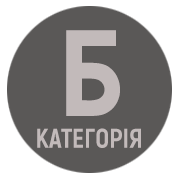Corpus approach to analysis of artefact metaphors in Terry Pratchett’s “Discwold” series
DOI:
https://doi.org/10.32782/2617-3921.2021.20.25-33Keywords:
cognitive linguistics, concept, lexical database, fiction, semantic annotation, contextAbstract
Today, corpus linguistics expands our understanding of various phenomena in linguistics and literature, because with the help of a computer automation scheme, as a rule, numerous words are analysed with great efficiency and accuracy. The corpus-based approach revealed many fascinating facts about conceptual schemes that were not known in advance and, in fact, that would be impossible to learn with a traditional, introspective approach. Metaphors play an important role in our cognition and communication, and the interpretation of metaphors is important for the processing of natural language. From a higher theoretical point of view, we rely on the thesis that human behaviour and reasoning are somehow mediated by metaphors and that metaphors used by people may in some ways reflect their world view. For example, artefact metaphors demonstrate a person’s perception of a certain abstract concept in the image of a particular object. In general, conceptual metaphors allow us to understand the source domain through the prism of the target one. Previously, examples of metaphors studied in the theoretical literature were literary or fictional, but over time the cognitive approach led to the transition to the use of corpus linguistics, and its research methods allow analysis on the basis of literary works. The study of metaphor on the basis of corpus differs from the traditional study of metaphor in that it can be both qualitative and quantitative. But the qualitative aspect still requires careful reading of passages of text, sometimes full texts, and without proper detection of metaphorical expressions frequencies remain only numbers. Probably, it is possible to tell with accuracy that for the last some decades corpus methods have proved as the basic empirical paradigm in linguistics. They have been deeply applied to research questions concerning all levels of language structure and many aspects of language use. The field of metaphor research lags behind this dynamic, but recently a number of researchers have begun to correct this situation by laying the methodological foundations for a strong emphasis on reliable data.
References
Adolphs Svenja. Introducing Electronic Text Analysis. London ; New York : Routledge, 2006.
Berber Sardinha Tony. Metaphor and Corpus Linguistics. Revista Brasileira de Linguística Aplicada. 2010. № 11. P. 329–360.
Halmari Helena. Variation in death metaphors in the last statements by Texas death row inmates. Corpus-based approaches to figurative language: A corpus linguistics 2009 colloquium / J. Barnden et al. (eds). Birmingham : The University of Birmingham, 2009. P. 85–92.
Hao Yanfen, Veale Tony. Understanding Metaphor Using a Corpus-trained Fluid Category System. 2021.
Lakoff George, Johnson Mark. Metaphors, we live. 1982.
Philip Gill. Chapter 4. Locating metaphor candidates in specialized corpora using raw frequency and keyword lists. 2012.
Sinclair J. Corpus, concordance, collocation. Oxford : Oxford University Press, 1991.
Sinclair J., Carter R. Trust the Text: Language, Corpus and Discourse. 2004.
Stefanowitsch Anatol, Gries Stefan Th. Corpus-Based Approaches to Metaphor and Metonymy. Berlin ; New York : De Gruyter Mouton, 2008.
Stubbs Michael. “Conrad in the Computer: Examples of Quantitative Stylistic Techniques”. Language and Literature. 2005. № 14.1. P. 5–24.
A Corpus of Rich Metaphor Annotation / Suzanne Wertheim et al. 2015.
Wikberg Kay. The Role of Corpus Studies in Metaphor Research. 2021.



